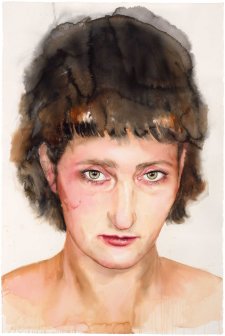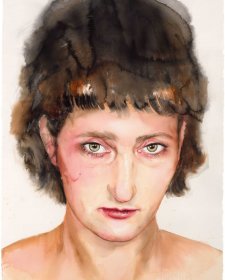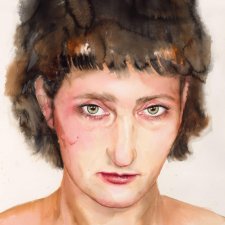- About us
- Support the Gallery
- Venue hire
- Publications
- Research library
- Organisation chart
- Employment
- Contact us
- Make a booking
- Onsite programs
- Online programs
- School visit information
- Learning resources
- Little Darlings
- Professional learning
William Walford (1821–1896), businessman, was born in Hobart, the son of a publican and the grandson of a Viennese engraver transported to New South Wales for larceny in 1791. In the early 1840s William moved to Sydney, where he married Elizabeth Symonds (1824–1912) in 1842. After their wedding, William became involved in a number of business ventures, investing in real estate and mining and later serving as a director of the Australian Gaslight Company and other firms. William and Elizabeth lived at 'Waratah' in Rushcutters Bay and had eleven children, of whom only five survived to adulthood.
The practice of painting over photographic portraits in pastel or watercolour became popular in the 1860s and 1870s. For sitters, the idea of having a portrait that combined the accuracy and convenience of photography with the aesthetics and prestige of painting was very appealing. And whereas the availability of photographs had a damaging impact on the output of some portrait artists, others saw photography as an opportunity. Painted portrait photographs – known as crayotypes, crayongraphs and various other terms – were offered by many photographic studios, and practitioners of the technique most certainly saw themselves as 'artists'.
Gift of the Estate of Leslie Walford AM 2013
William Walford (age 52 in 1873)
The Estate of Leslie Walford (3 portraits)



On one level The Companion talks about the most famous and frontline Australians, but on another it tells us about ourselves.



Encompassing the 1820s to the 2020s, Time and Line showcases the depth and extent of our drawing collection.



Visit us, learn with us, support us or work with us! Here’s a range of information about planning your visit, our history and more!